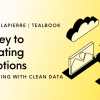The sourcing industry has so far had a spectacularly wonderful run. Twenty-five years of constant change, dynamism, technical competencies; business-aligned, people-centric, and bottom-line focused; intrinsically able to deliver on all promises made. As with any journey, bumps and roadblocks are expected. Navigating them painstakingly has created heroes of many an organisation, spilling over benefits into the developing world, and capital markets. I don’t gainsay the fact that millions of jobs (and millions more into indirect economies) were created, translating into greater (though exclusive or discrete) purchasing power within nations and communities, alongside building reputations and careers for thousands. The gains that were paraded over time have overshadowed the complexity of the industry’s underbelly. Short shrift was given to deliberations on the industry’s longer-term future. All our endeavours have at best been dedicated to projecting into a 12-month future. Opportunities alongside – however uneven or distinctly convoluted they may have been – kept trickling into the industry, thereby giving us all a semblance of normalcy. We seem to have gone down the path of not anticipating “black swans” as we believed this industry didn’t have to deal with them.
This article is not brooding over what could have been. It is aimed at splitting the underbelly and taking a peek inside what we may have ignored – either the warnings, or the signals. A decade and a half ago, the provider marketplace was distinctly divided into two camps: the traditional biggies, and the (developing world) newbies. The latter sought growth and profitability on the back of cheap provisioning of inputs, while the former continued to grow on the back of home-grown resource provisioning (considered expensive only when the alternatives for cheap labour came up). I wonder what would’ve been the case if such cheap labour was not discovered. Would this industry have developed into what it is now? At that point traditional biggies set about changing their delivery models so as to effectively compete with the newbies, while the newbies themselves aligned themselves with capabilities to take on the biggies on their own turf. Competition came to a point about input-factor sophistication (and attendant aspects around costs needed to provision such factors), alongside other tactical factors like quality and structure, standards and predictability. These were what defined value then. The first black swan perhaps?
Fast-forward a decade later, most such traditional models (dubbed outsourcing 1.0 and 2.0) failed on even their basic promises. Nevertheless, a multitude of nations embarked on the promise of cheaper inputs, thereby supporting the original successes with sourcing. The industry had gone global, notwithstanding either the ability or the sustainability of such nations to continue with such provisioning in the presence of complex internal sector specificities/woes that influenced their own economic well-being. Value now got defined as a continuous pursuit at commoditising input-factors, where the greatest bang for the cheapest buck prevailed. The second black swan perhaps?
The industry continued to surge, notwithstanding a few glaringly obvious trends, spanning reduced third-party sourcing deals, increased insourcing and vendor consolidation, delivery contracts structurally altered to pass on more business risk to providers, demand for business-centricity changing the fundamental sourcing language from the buyer end, and attendant technology alternatives that permitted clients to relook at all their relationships afresh. An Outsourcing 3.0 emerged, seemingly (though inadvertently if I may surmise) in response to these very changes in demand behaviour.
Provisioning models locked horns with customers in a bid to unravel a plethora of skeletons out of the closet. Principal among these revelations was a complete lack of trust between partners, risks unequally shared, retained organisations struggling to align to marketplace changes even while vendor portfolios grew and became unmanageable (thereby increasing governance controls). These factors had a spiraling impact on taking away focus from the primary goal driving such relationships: marketplace value that made sense to the customers’ top-lines. Value now got defined as a function of robustness of governance and oversight. The third black swan, perhaps? Enter the disrupters. Their seemingly startup culture-driven models promised zero baggage and a hundred per cent value alignment with customers’ top-lines. Their entry of course was premised on (a) replacing traditional input-heavy sourcing relationships with cheap and easy-to-deploy-and-maintain technologies, and (b) continuously gaining end-consumer insights through deployment of modern technologies (social media, analytics) and access platforms (mobility and cloud). This entry again was targeted at those very functions that had embarked on the sourcing journey from 1.0 through to 3.0, and weren’t the wiser for their experience. Value is now defined by the modernity of technologies deployed in operational/ functional environments in comparison to others. It almost seems like old wine in a new bottle. The fourth black swan, perhaps?
Envisioning Tomorrow
Here we are now, at a point in the industry’s lifecycle, where successes are measured not as a function of business value so much as a function of technology modernity in play. Marketing rhetoric has superseded the need for reality checks in a world flush with start-ups promising to be the next best thing that may have happened to humanity. Concerns around organisational size, internal matrix relationships and complex governing environments aren’t thought of as important enough to address. Business value languishes while enhanced end-consumer focus has created lopsided organisations where internal resilience isn’t reflective of the demands placed by the marketplace. As a case in point, recent financial results announced by listed newbies and biggies were surprising, with significant divergences in comparison. Weren’t the newbies and biggies essentially offering seemingly replicable services at similar price points, articulating almost the same value through the industry’s three “transformational” cycles?
What changed? Large human-resource heavy firms (spanning both newbies and biggies) that provisioned cheap labour at great economies of scale are now struggling to remain relevant. Cannibalising existing models has never been easy, yet a disregard for all such black swans that came by over the past twenty-five years is pushing organisations to do exactly that. I would like to think that the black swans I mentioned above were never seen in that light by a few firms who chose sustained value over intermediate populism. Their focus on customers’ top-lines has and always remains at the forefront of conversations. Sharing risks and co-creating solutions has enabled some to build resilient organisations that are not carried away by the latest fad (SMAC, Big Data, DevOps, SIAM) or hype (automation and RPA). Instead they have been able to view all input types – human and otherwise – in the context of value being pursued, with value itself being strictly aligned to customers’ top-lines. Goals then are to deliver on such values; routes to or input-factor combinations notwithstanding.
We have arrived at a point in the industry’s growth where pretenses and half-measures will no longer give us room to manoeuver. Replicating marginally distinguishable input-factors, or treating technology as divine will surely not assist organisations in co-creating value. Neither will competitively distinguishing such factors from standpoint of balance-sheets alone suffice in enabling growth for customer entities. Instead, black swans will hit more often. I would instead recommend that we invest in “unlearning” all that we know about the industry. Such unlearning is a precursor to a new pursuit, in a more complex, more integrated yet nefariously heterogenic world. It would also then allow us to don a bigger role around national transformation and domestic marketplace enhancements that emerging and developing economies have come to expect of us. We as an industry too could substantially benefit from being moved up the relevance ranks (“derived” to “mainstay” economic activity tag). Perhaps that would permit us to remain ahead of the curve, anticipate black swans and align our approaches with resilience and sustainability forming pedestals for such pursuits.









